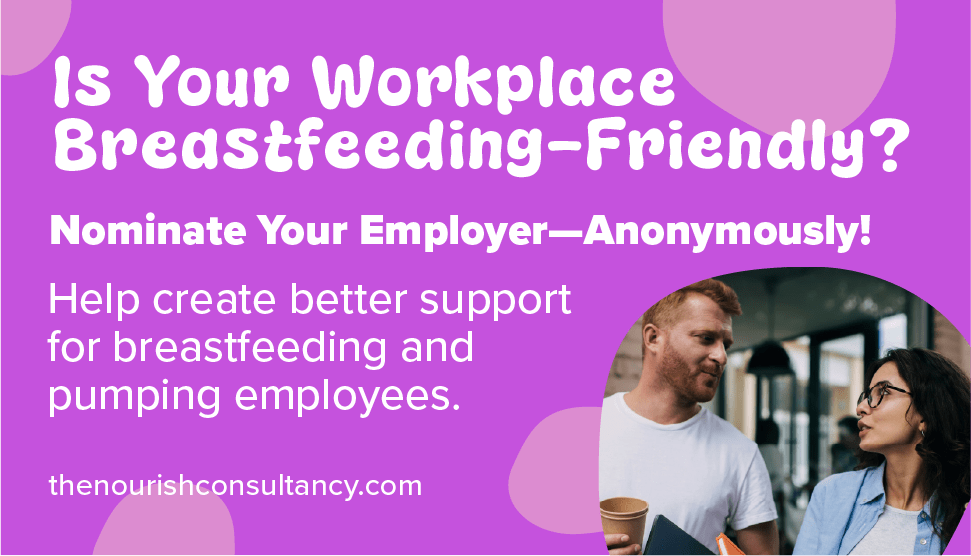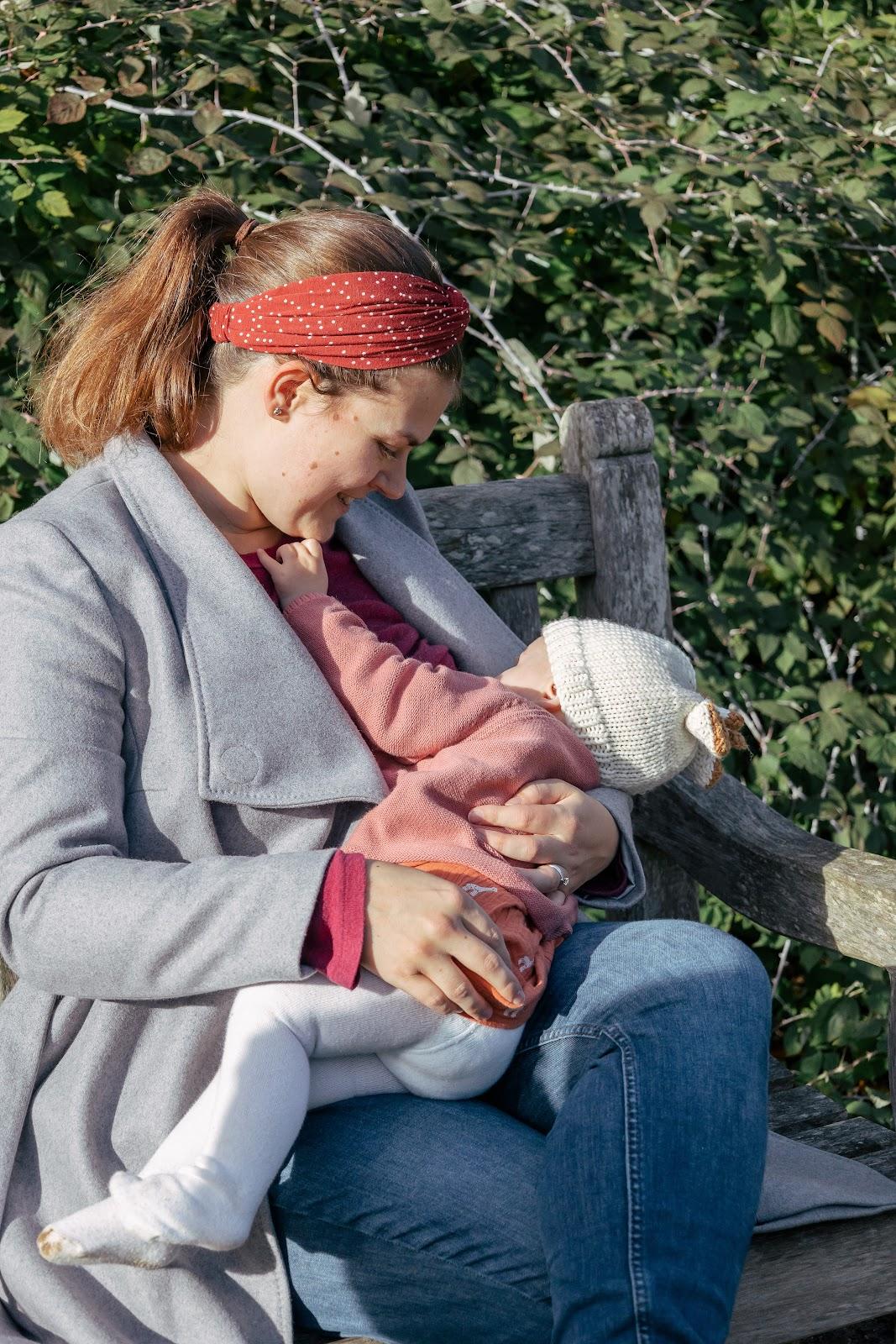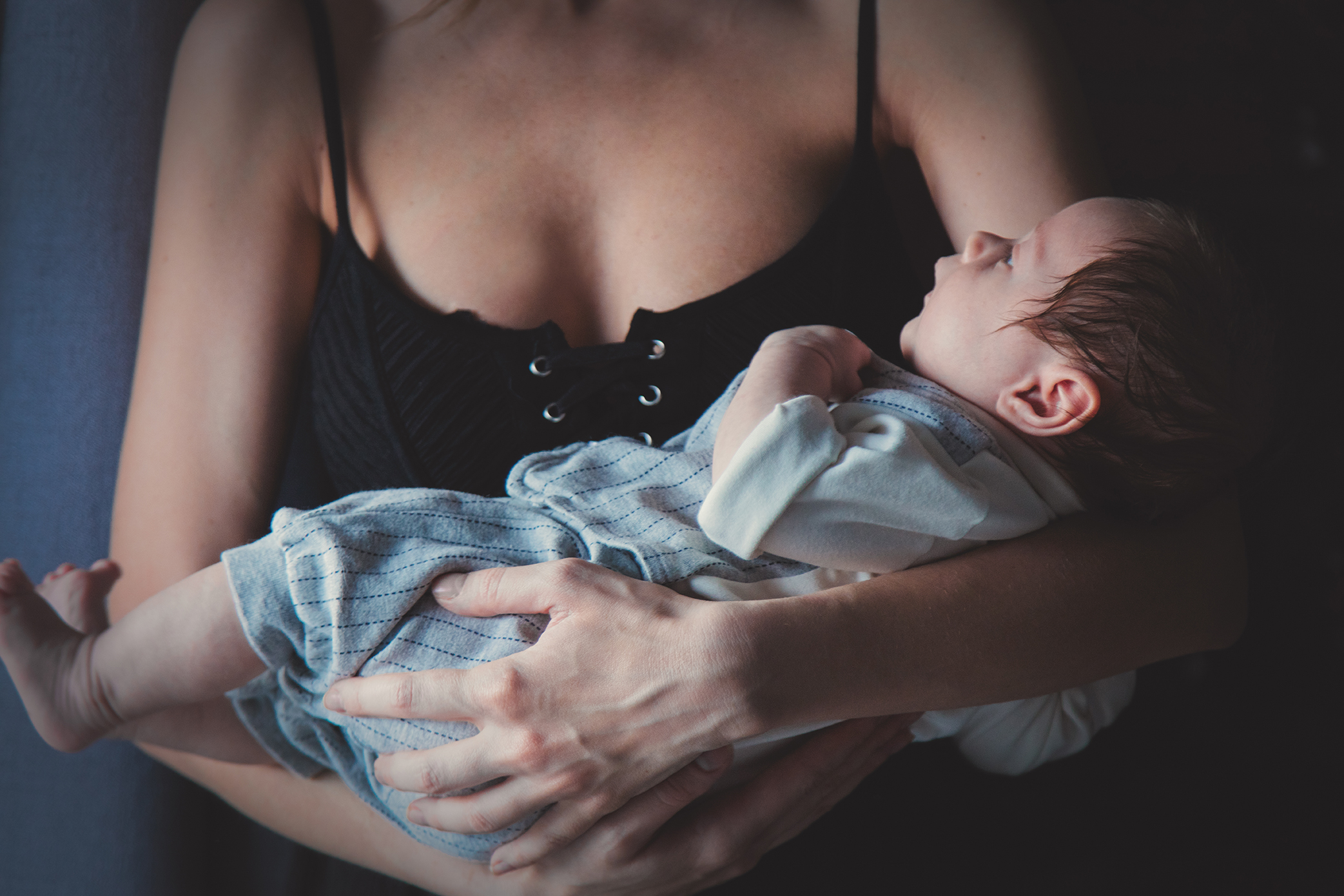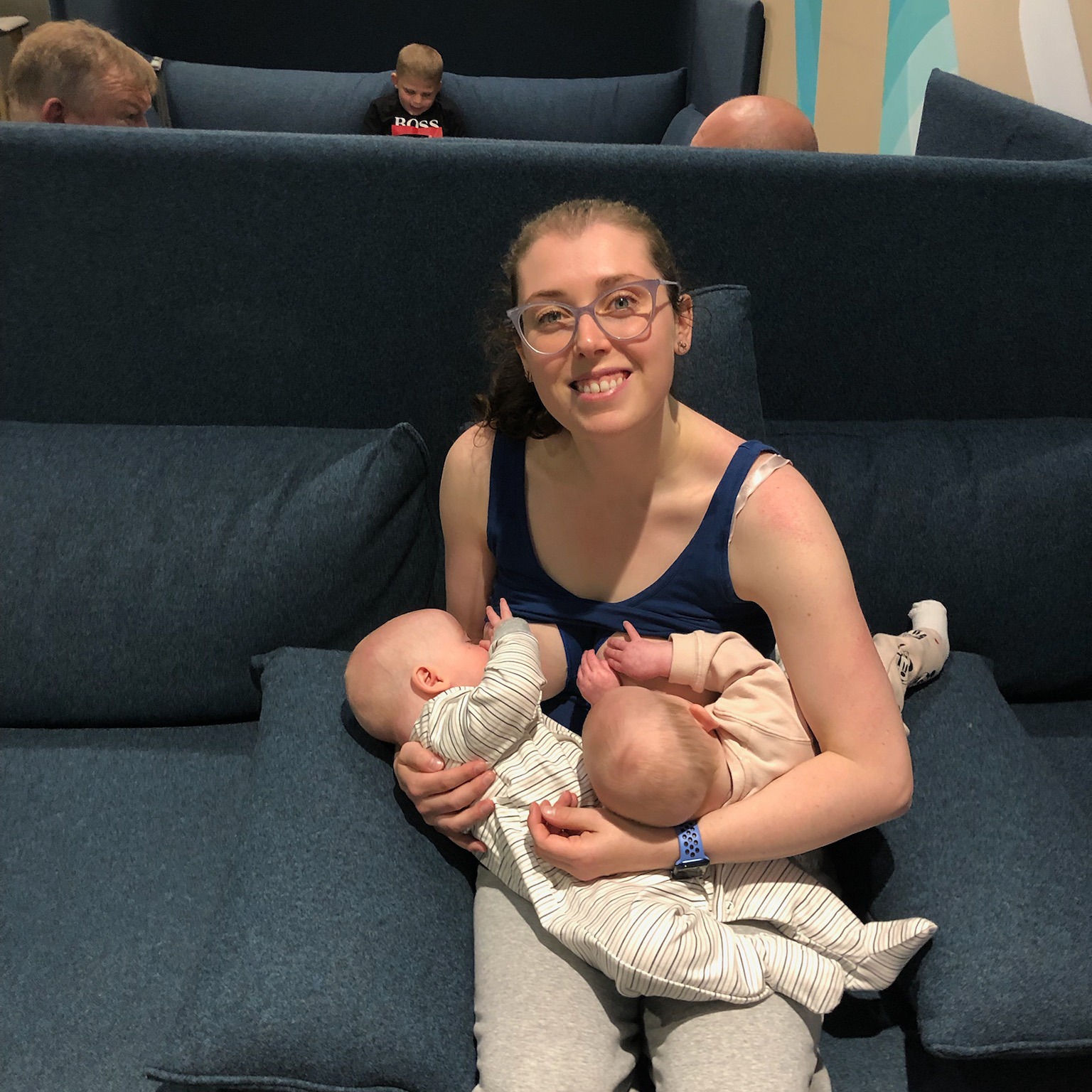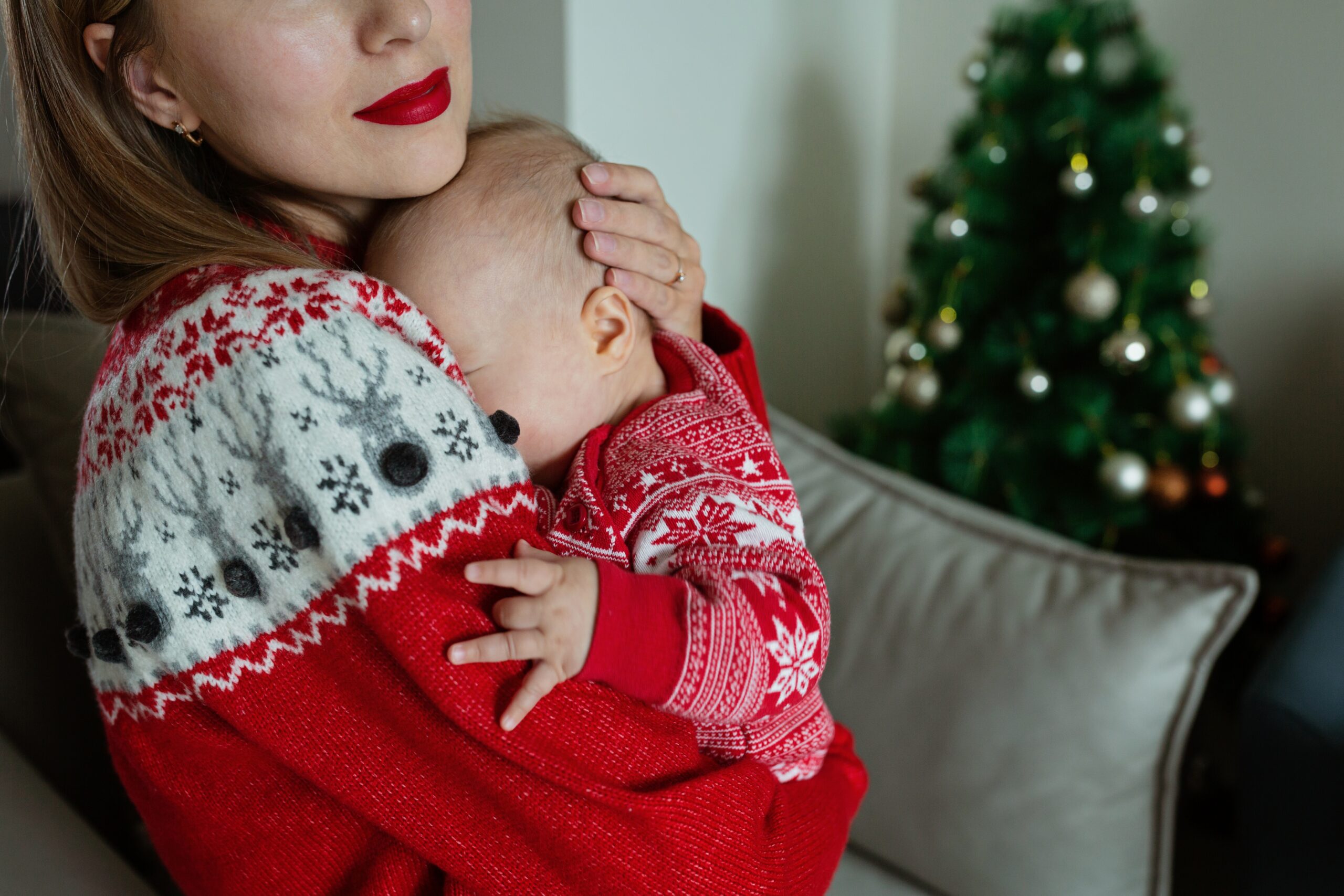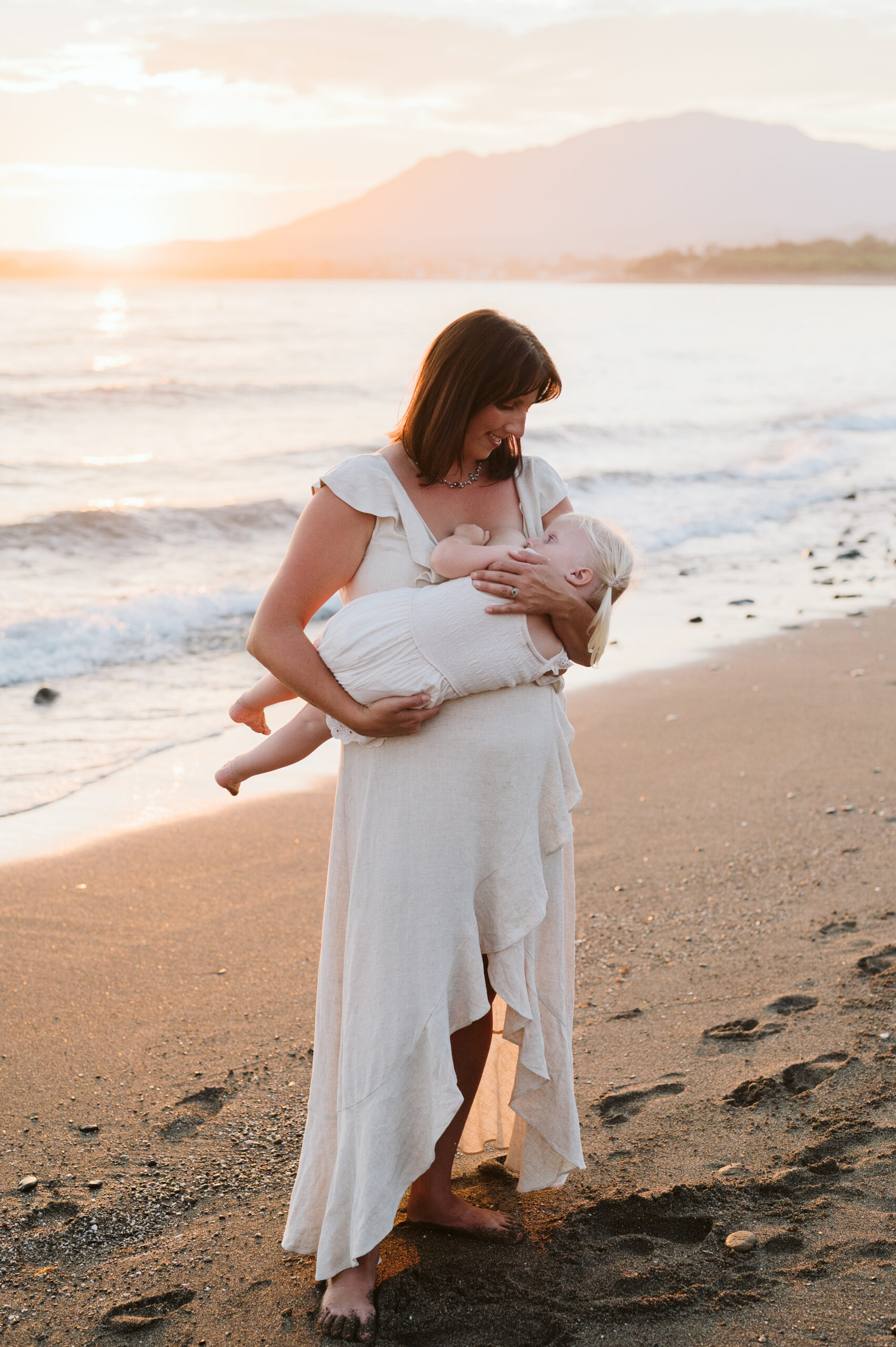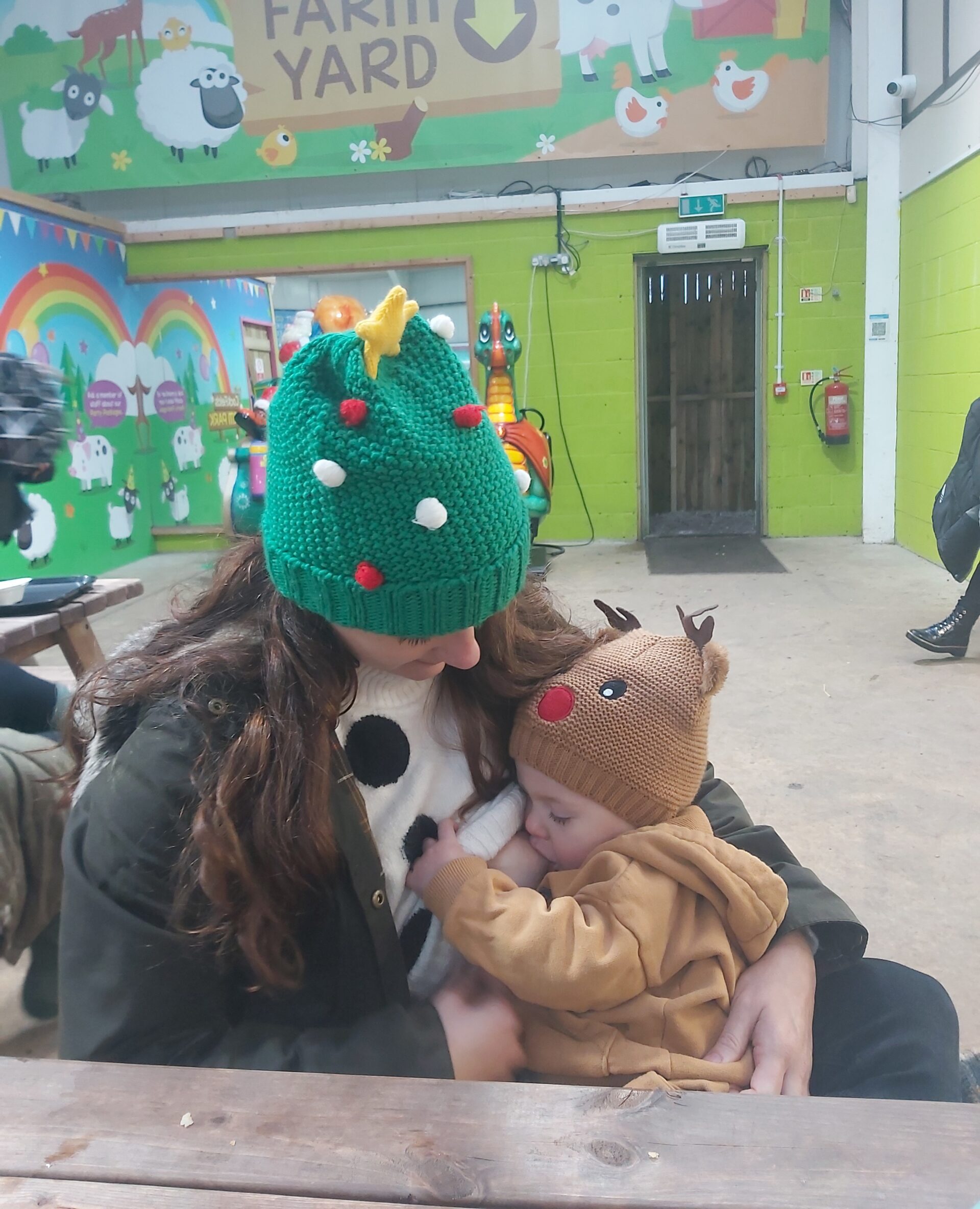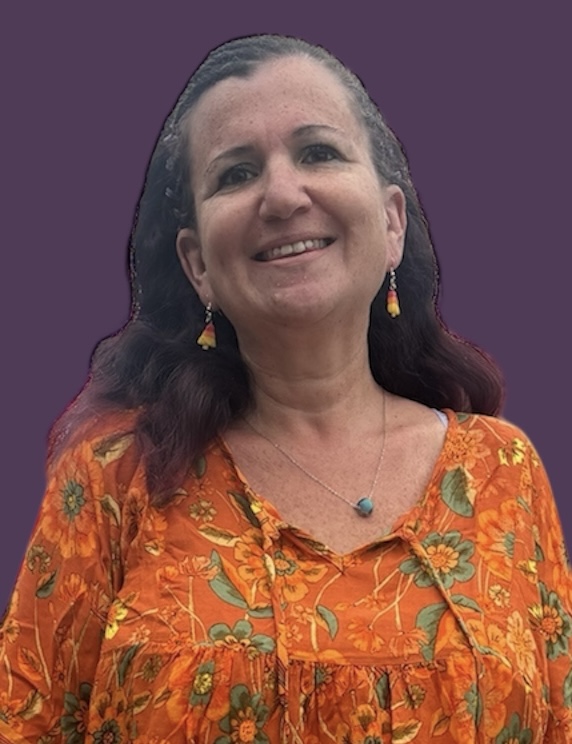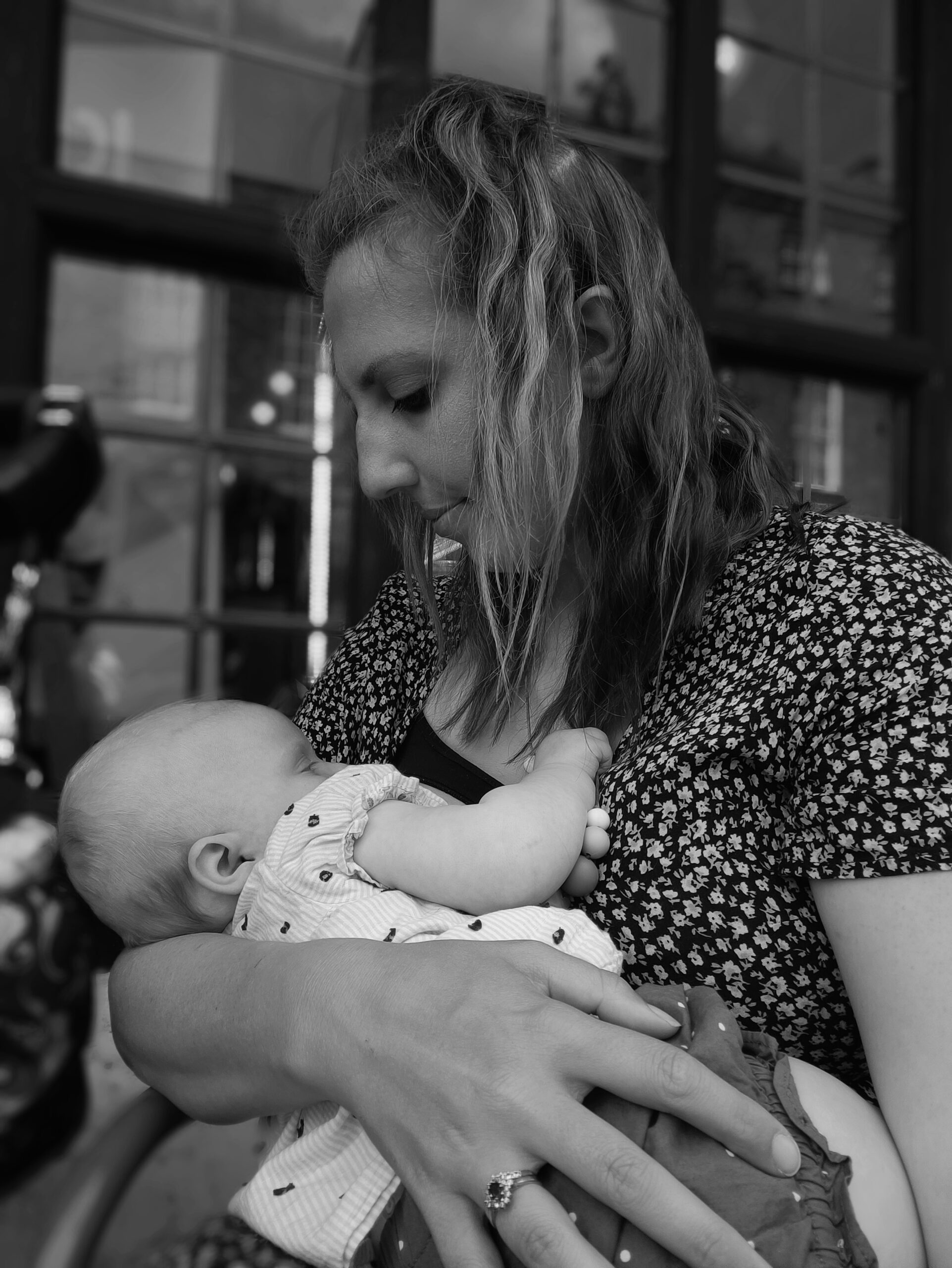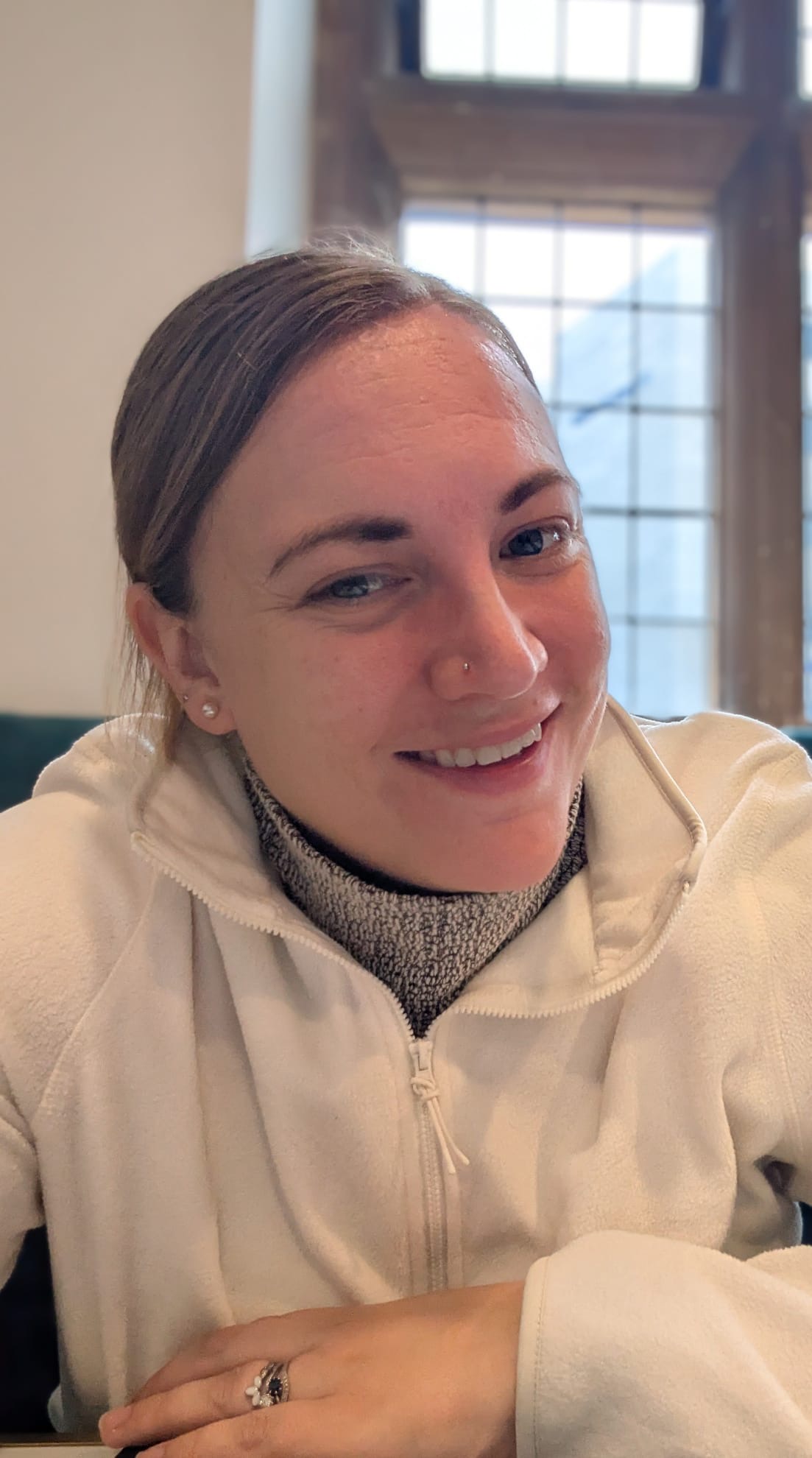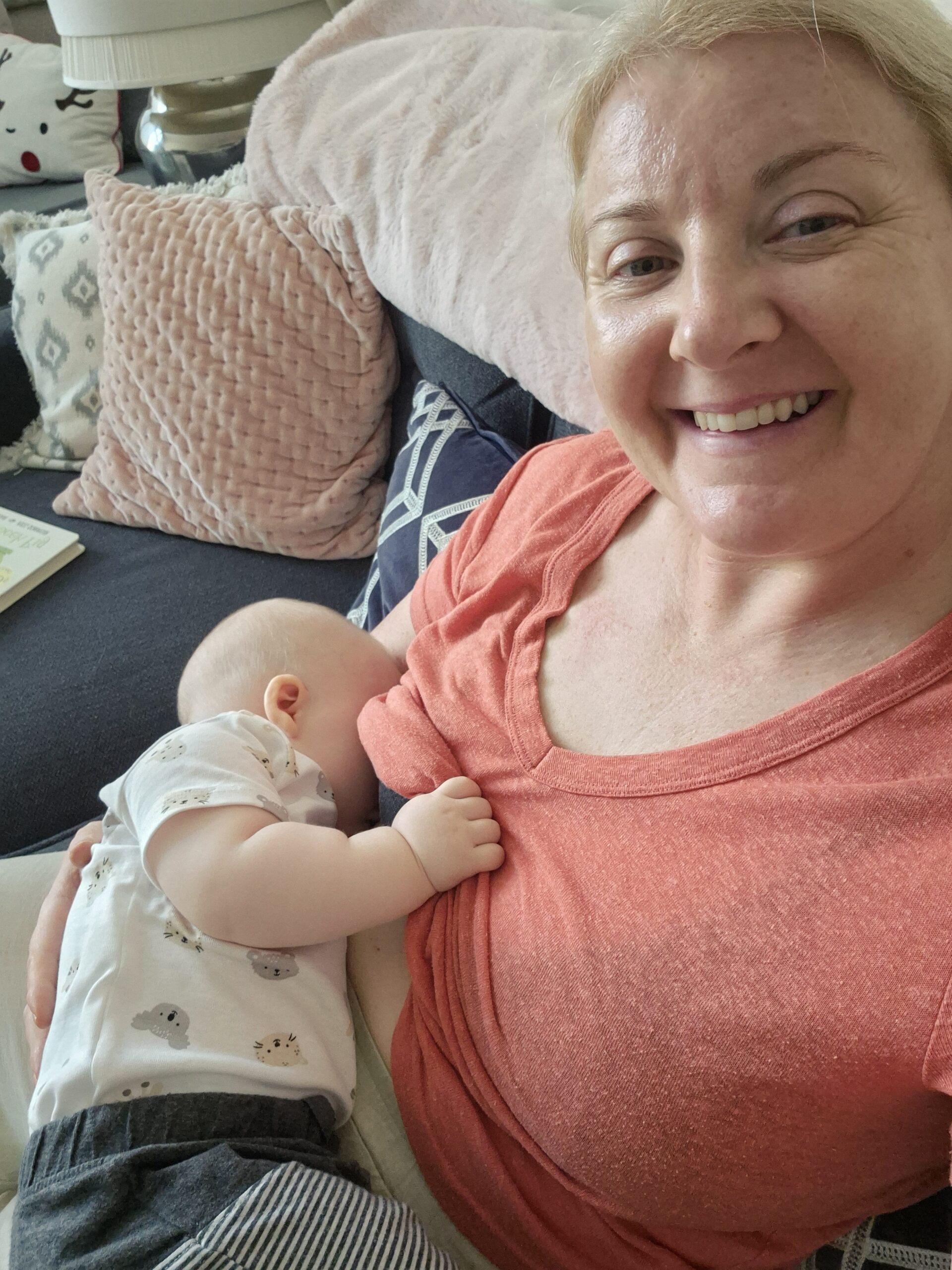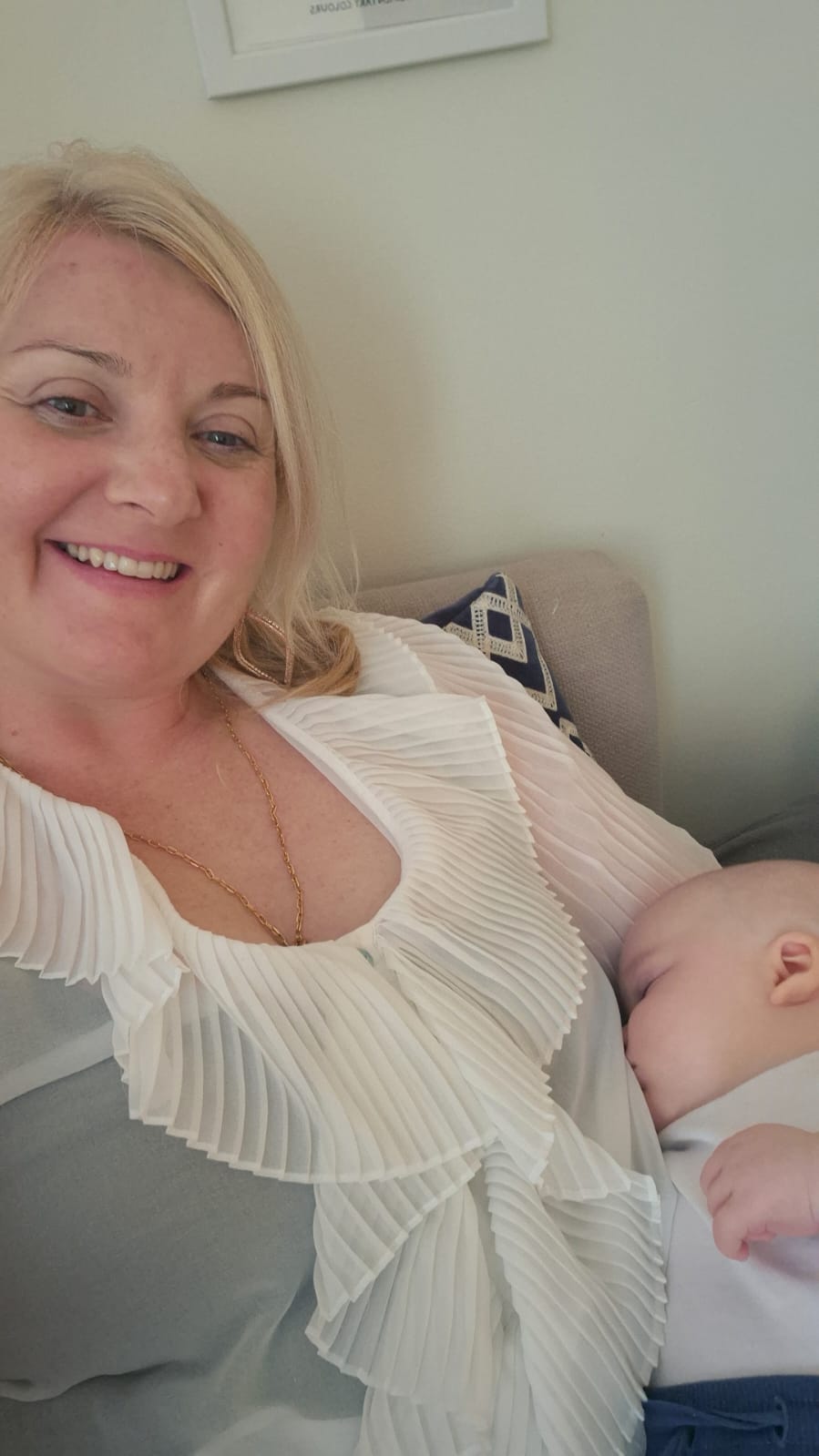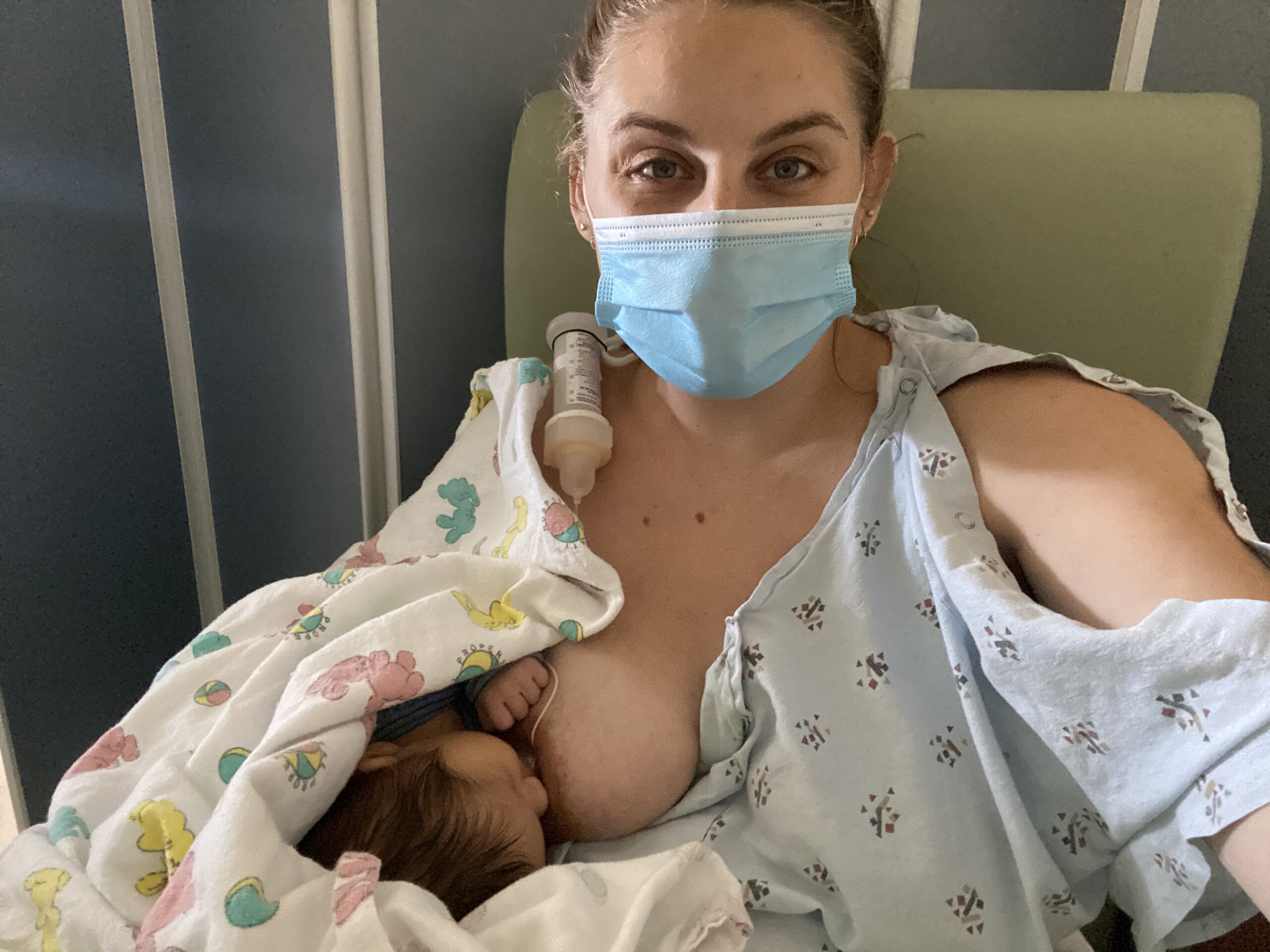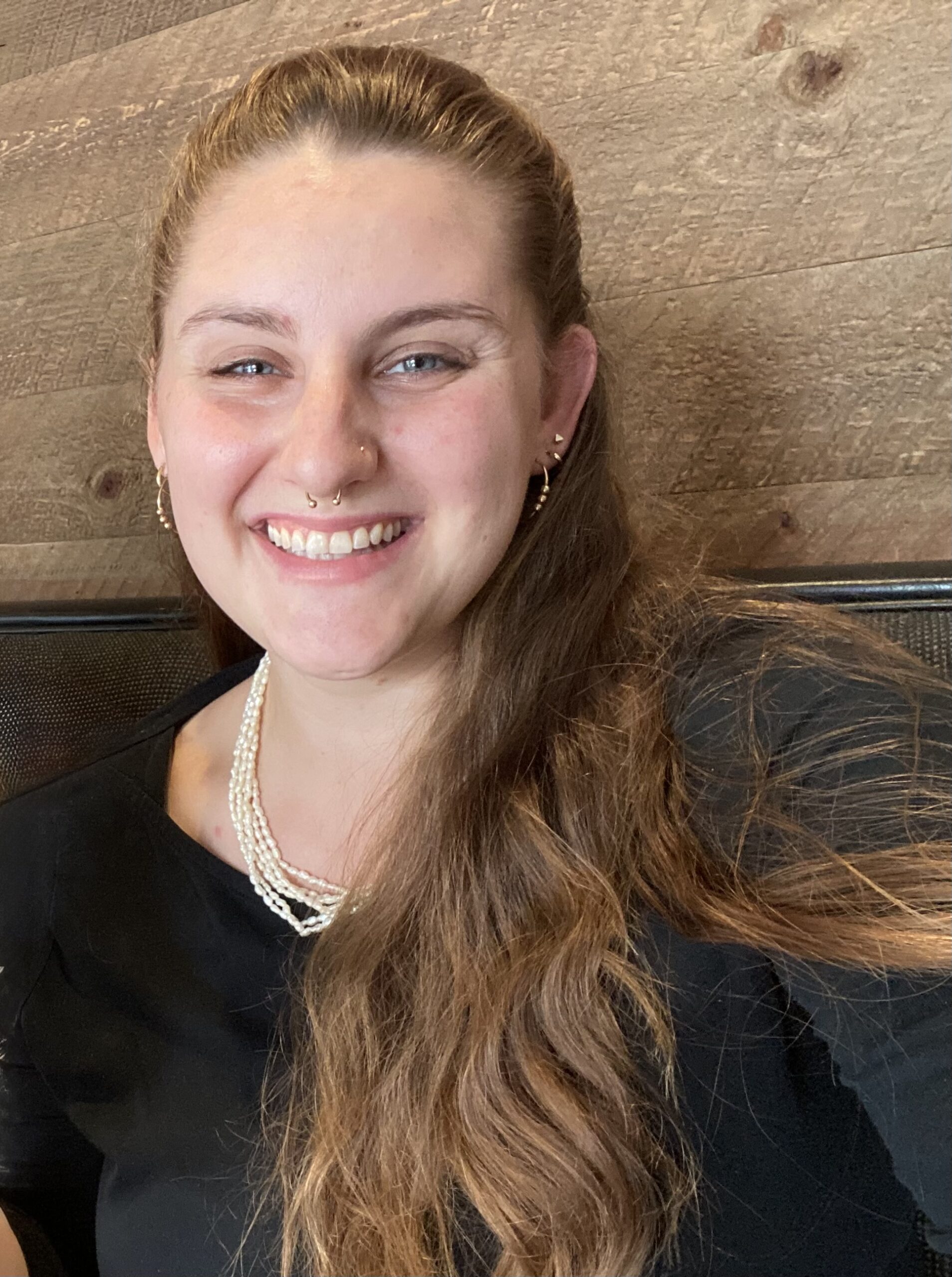In part 1 of my breastfeeding story (you can read it here) I talked about the realities of breastfeeding from birth to 6 months. Now I want to continue my story by telling you about what it’s been like breastfeeding my daughter past 6 months of age.
We often hear a lot about the newborn breastfeeding stage, but not so much about the realities of breastfeeding an older baby and child.
To 6 months and beyond!
My goal had always been to breastfeed for 6 months and the fact that we overcame so much made achieving that aim all the more rewarding.
I always thought at 6 months we’d start giving her formula. However, when it came down to it I’d grown attached to feeding her. For me it was enjoyable and it made me feel close to her. It was easy, not having to worry about bottles and preparation.
I always thought at 6 months we’d start giving her formula, but when it came down to it I’d grown attached to feeding her.
Over the course of the next month, I changed my mind several times. First, I said I wanted to stop by Christmas, then I extended that to a year (when I would be going back to work). Then I started thinking that I might feed her for a bit longer than that, to ease the transition. But not for much longer – at least that’s what I thought then.
I realised that I didn’t know what I wanted, or when the right time was to stop. It’s strange how your feelings can change so much in such a short space of time. I decided at that point to stop setting goals and to just enjoy it and go with it.
The longer I’ve breastfed for, the more I’ve realised that not a lot is said about feeding an older baby or toddler. As I’ve found myself in that position I thought I’d now do my bit to change that.
Feeding into toddlerhood
The WHO recommends exclusive breastfeeding for the first 6 months and then continued breastfeeding alongside complementary foods for 2 years and beyond. As I said previously, having made it further than I thought I would, I decided not to set goals or targets and to just go with it. I will continue to breastfeed until it no longer works for us as a family.
That’s an important nuance for me. This isn’t just about my daughter, although the benefits to her are significant factors in the decision to continue breastfeeding. It’s not just about me, although I really love breastfeeding for the connection it gives me with my daughter and the ability to calm and soothe her.
My husband is my biggest supporter
It’s also about my husband. He has been the biggest supporter in my breastfeeding journey. If it weren’t for him I definitely wouldn’t have made it as far as I have. He took it upon himself early on to inform himself about the realities of breastfeeding, meaning when I was worried he could dispel myths and reassure me. It was my husband who was the first person to tell me that you can’t overfeed a breastfed baby, and that it doesn’t matter why our daughter was crying, if in doubt, get the boob out!
He is still so supportive and encouraging of us continuing breastfeeding. It’s this attitude that makes it work for our family. We are all on board and as long as that is the case, we’re not going to try to fix something that isn’t broken.
Starting on solids
At around 6 months we started introducing complementary, i.e. solid, foods, but she was slow to get into them and it took a long time for me to enjoy mealtimes with her (well after she turned one). We tried to give her some formula on a couple of occasions to enable me to go out for more than an hour or two. I did try expressing a few times but it wasn’t for me. She’s never taken to a bottle and I found most of the milk I expressed was wasted. I would spend time pumping to get enough milk, only to have to breastfeed her anyway.
The fact that she wouldn’t take a bottle also meant the formula idea didn’t work so well. You can cup feed babies from an open cup, but it takes practice and therefore isn’t an easy solution.
A freezer stash of breastmilk isn’t necessary
I think there’s often a perception that pumping and creating a ‘freezer stash’ is a necessary part of a breastfeeding / chestfeeding journey. But I’m proof that that isn’t the case.
So, what with solids getting off to a slow start and not being able to give formula, I found that I was as attached to my daughter as ever, as she was so reliant on me for her milk. That said, I really enjoy feeding her. It’s usually quite relaxing and means I get lots of cuddles. Plus the contact naps were a nice way to get a bit of down time (even if it is still a bit draining as she’s feeding).
Teething can be tough
There were ups and downs over the months. I was lucky in some ways that she didn’t get her first teeth until she was over 8 months old. You can absolutely carry on breastfeeding when babies have teeth. However you often find that they go through periods when teething where they want to breastfeed way more than usual. Their latch can become painful and need adjusting.
You can absolutely carry on breastfeeding when babies have teeth. However you often find that they go through periods when teething where they want to breastfeed way more than usual.
Breast milk acts as a natural form of pain relief
Breastmilk acts as a natural form of pain relief for them and the sucking is soothing. But as the teeth come through they may try to bite (or clamp their gums together), to relieve some of the pain. Their latch can also change as they get used to having teeth in their mouth.
For us, every time she goes through a spell of teething, it is a case of going back to basics and trying to get as deep a latch as possible. Whenever she goes to bite me I take her off the breast, tell her no and sometimes take a break before we start again. It’s the gentlest way I’ve found of teaching ‘table manners’ and seems to be working in general.
We still go through phases when she’s teething, when her latch gets worse and she bites more often, but it’s manageable. I’m getting used to preempting it and unlatching her before she actually bites. I can often feel a change in her position before she goes to bite, that gives me the heads up to unlatch her. I just tell myself that it’s a phase and it doesn’t last long.
It definitely hasn’t changed my love of breastfeeding.
Don’t fix what isn’t broken
Something I have noticed is that the older your child gets, the more people start asking you when you plan to stop breastfeeding. I think it says a lot about our society, that something we praise so much in those early months, suddenly becomes something unusual.
Something I have noticed is that the older your child gets, the more people start asking you when you plan to stop breastfeeding.
Having worked so hard to establish breastfeeding, people often feel pressured to stop once they reach the 6-month mark. Many people don’t know that it’s recommended for 2 years and beyond, let alone that natural term weaning (when a baby naturally stops breastfeeding without intervention) can happen anywhere between 2.5 and 7 years old (or even older in some children).
So having worked so hard to start breastfeeding my daughter I wasn’t about to just stop. I really wish that people could be happy to let you carry on, without having a set goal, or plan to stop. If it’s working, why change it?
In sickness and in health
There have been a couple of times during our journey when I’ve been so glad that I’m still breastfeeding. Both have been when she has been ill.
Just a couple of months after she turned one, she had a cough and started struggling with her breathing. We ended up in hospital with her overnight so that she could be given supplemental oxygen. I’ve never been so worried about her, but one thing I didn’t have to worry about was feeding her, as again she was happy to breastfeed. It also meant that she was still getting the benefits of my antibodies to help her fight the illnesses.
I’ve heard people say that breastmilk loses its benefits after a year, but that’s just not true. The science says otherwise.
The highs definitely outweigh the lows
I know that the ups and downs will continue. Every time she’s ill, cutting a tooth, or learning something new then she will want to feed like a four-month-old again.
The photo above was taken not long after my daughter started nursery. She was sent home with a fever and, like most of us when we’re ill, she wasn’t interested in solid food. She just wanted to feed and nap on me. So I found myself sitting on my sofa, supporting my daughter with one arm, typing with the other and balancing both her and my laptop on my lap. Oh, and she insisted on clinging onto her birthday balloons! It took multi-tasking to a whole new level! It was a tough week but we managed.
Breastfeeding can be hard but also enjoyable
Yes, it can be frustrating, especially when she bites me, or pulls my hair, or scratches me while she’s feeding because she’s frustrated. Sometimes she has a split night, when she is awake for 2 hours in the middle of the night and feeds so much that my nipples are sore. She settles eventually, she always does. It can feel like a lot, but what helps is repeating a mantra I heard from a parenting group: this is hard, and this is important.
But the ups outnumber the downs. And the highs definitely outweigh the lows. On the good days, it’s such a lovely way to connect. I can pretty much always calm her down. And my reward is when she looks up and gives me the cutest, milky smile.
Just because something is hard, doesn’t mean you need to stop. I think it’s important to acknowledge that breastfeeding can be both hard work and also enjoyable, and that’s ok.
I think it’s important to acknowledge that breastfeeding can be both hard work and also enjoyable, and that’s ok.
It takes a village
Something I have struggled with is feeling alone and not knowing where to turn. As a first-time mum without a large group of friends with children, I’ve often felt at a loss. So what would I recommend?
My tips for seeking out breastfeeding help and support
Firstly, if you plan to breastfeed / chestfeed, before you (or your partner) give birth:
- Take an antenatal class by a trained lactation consultant. Many courses run by large organisations are often given by midwives who do not necessarily have in-depth breastfeeding training. Look into taking a couple of different courses so that you’re getting information about birth and breastfeeding by people who are most qualified to deliver it.
- Make a note of the National Breastfeeding Helpline number. This is free and staffed from 9:30am to 9:30 pm by trained breastfeeding counsellors 365 days per year.
- Find out about your local breastfeeding support options. If you’re looking for free support the Association of Breastfeeding Mothers (ABM) and National Childbirth Trust (NCT) run lots of groups all over the UK.
- Look up your nearest IBCLC (many are listed here) if you are in the position to be able to pay for one. The IBCLC qualification (International Board Certified Lactation Consultant) is the highest qualification you can obtain in relation to breast/chestfeeding and is internationally recognised.
- Consider asking for donations towards breastfeeding support instead of baby gifts. Or, instead of spending hundreds of pounds on breast pumps, sterilising machines, etc. save the money. If you are able to establish breast / chestfeeding you may not need most of it. Good quality support is hard to come by and invaluable if you need it.
- Follow trained lactation consultants on Instagram / Facebook. Lots of IBClCs have social media accounts where they offer amazing information for free. I follow Charlotte Treitl, Kathryn Stagg, Lucy Ruddle, Lucy Webber and Olivia Hinge.
- Look up your local tongue tie practitioner. Hopefully you will never need them, but if you do you know where to go. This link will show you both NHS and private practitioners. The NHS will divide a tongue tie for free, however you may have to get a referral and wait. Private treatment is expensive it will likely be available much more quickly.
Final thoughts
Nearly 2 years on and we’re still going strong and as someone who is breastfeeding a toddler, I make a point to feed her everywhere and anywhere I can in the hopes that it gives someone else the confidence to do the same.
Despite the rocky start, the pain, the mastitis, the sleep problems and the inconvenience of using shields I persevered. Before B was born I said I wanted to breastfeed if I could. After she was born I realised it was something that I needed to do for her and for me. The more I learned about breastfeeding and its benefits the more important it became to me. My husband was so supportive and feeding on demand became a parenting tool for me as much as a way of feeding, a breastfeed could solve most problems.
Trust your instincts
I felt let down along the way – especially in the beginning. There were problems that should have been identified but weren’t due to midwives, health visitors and GPs lacking training in breastfeeding. From the tongue tie, to the neck tension, to the sleep problems, there were numerous occasions where signs were missed and my concerns were dismissed.
If you take one thing away from my experience it’s to please trust your instincts. If something doesn’t feel right, seek support as soon as possible from someone who is qualified. Getting help early saved my breastfeeding journey. In my opinion, waiting is rarely a good idea and can often lead to more complicated problems. I hope you never have to face what I did, but if you do, I hope through reading this you feel more prepared to tackle those challenges.

